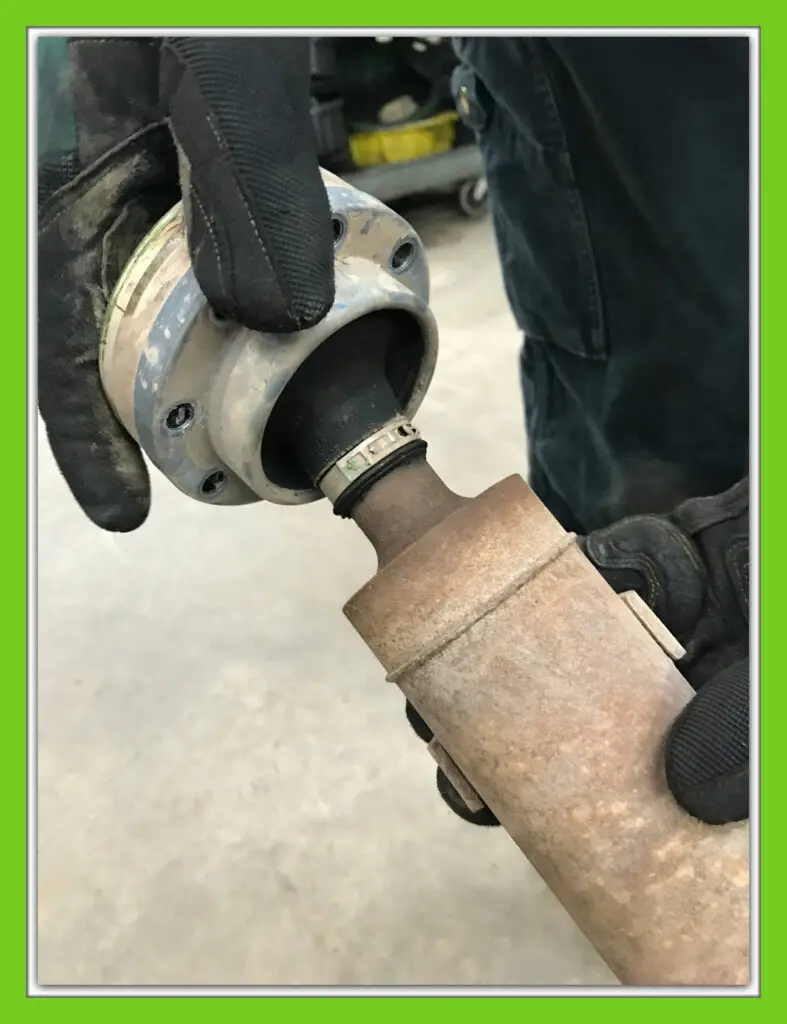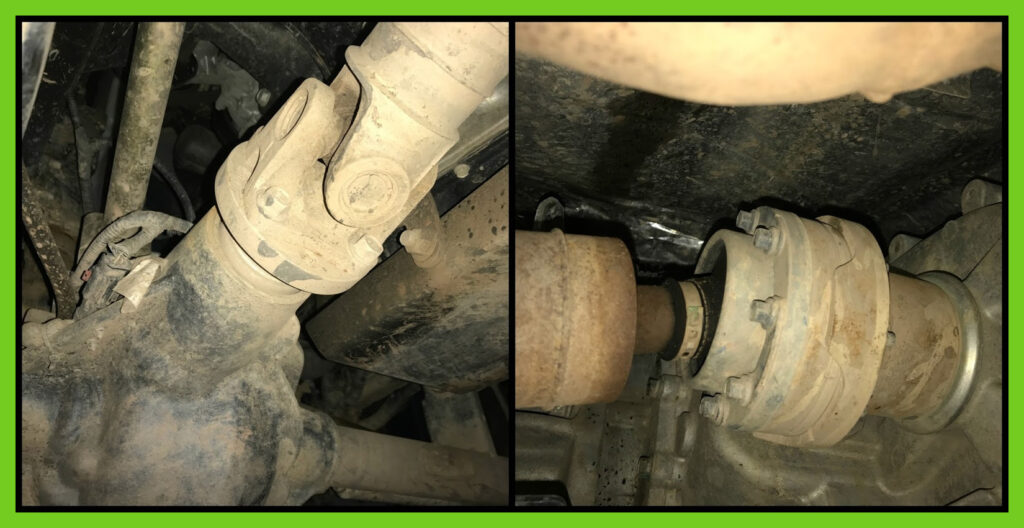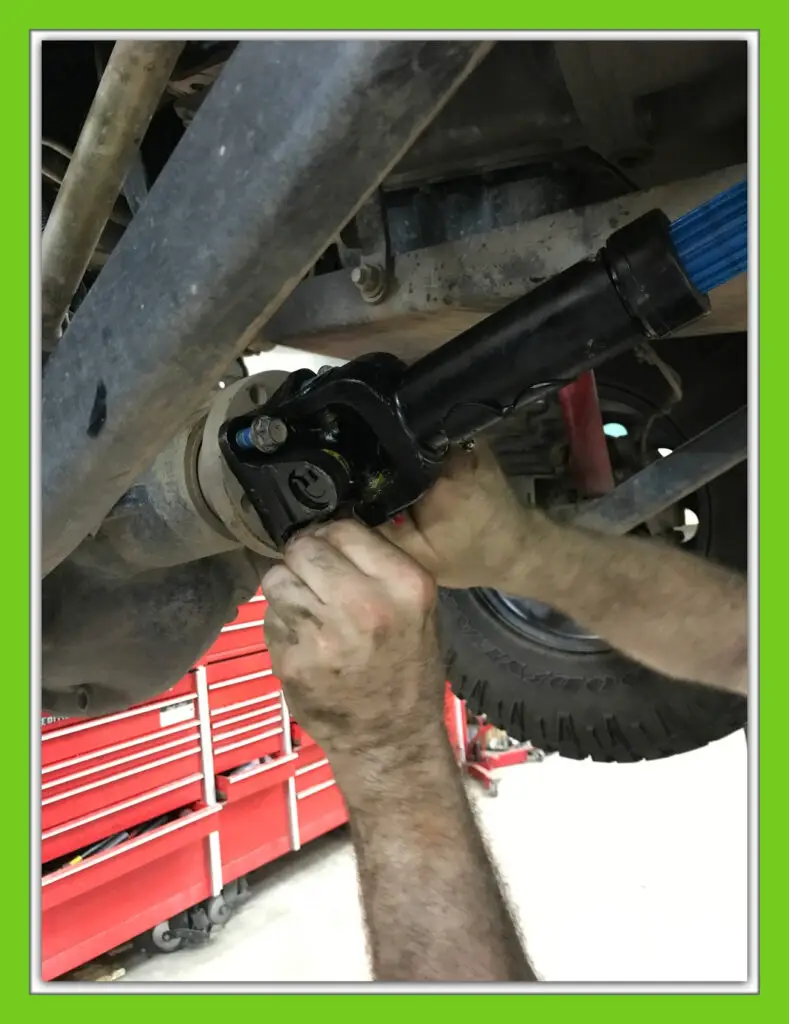What is the Rzeppa Joint

Jeep Wrangler Driveshaft
When tackling the rugged terrains or cruising through city streets in a Jeep Wrangler, one crucial component ensuring a smooth ride is the driveshaft. particularly the Rzeppa joint. This essential part plays a pivotal role in the vehicle’s performance, but not all enthusiasts might be familiar with its function and importance. Let’s take a look into what the Rzeppa joint is and how it operates. Then why upgrading to an aftermarket driveshaft becomes necessary when lifting your Jeep.
While working as an engineer for Ford Motor company, Alfred Hans Rzeppa created his constant velocity joint in 1926. It was patented it the following year. The Rzeppa joint is a specific type of constant velocity joint—the ball and socket design. This design involves 6 balls working with inner and outer races to transmit constant velocity torque from many different angles. Especially when the angle of the intersecting rotating shafts is expected to change frequently during service.
Constant Velocity Joint
Constant Velocity Joints or CV joints are part of the driveline on a front wheel drive or four wheel drive car. The CV joint’s output speed equals the input speed regardless of the angle of the joint. The original version of the CV joint is a ball type joint. It is a flexible joint that allows the wheel on the outside of the turn to steer. At the same time, it allows the car’s suspension to continue with its up-down motions as the car moves. The CV joint is usually found on the outer end of the driveshaft – joining to the wheels. While the inner drive shaft – connected to the transaxle – usually has a different kind of CV joint called a tripod joint.
Understanding the Rzeppa Joint

The Rzeppa joint consists of a spherical outer shell with an internal raceway that houses several balls. These balls are positioned in the raceway by a cage and connect to the inner race attached to the driveshaft. As the joint moves, the balls roll within the grooves, allowing for a constant velocity between the transmission and the wheel, regardless of the driving angle or condition.
Why Jeep Chose the Rzeppa Joint for the OEM Drivefast
At the core of its functionality, the Rzeppa joint’s design allows for flexibility and durability. When a Jeep Wrangler navigates through uneven terrains, the suspension system moves up and down. The Rzeppa joint accommodates these movements by allowing the driveshaft to maintain a constant rotational speed. This action ensures that power delivery to the wheels is smooth and uninterrupted, enhancing the vehicle’s overall performance and driving experience.
The Challenge with Greasability
A notable aspect of the Rzeppa joint in Jeep Wranglers is that it is not greasable. This design choice stems from the joint’s sealed nature, intended to keep out contaminants while retaining lubrication within. While this setup offers a maintenance-free operation under normal conditions, it poses challenges for off-road enthusiasts and those who lift their Jeeps.
The lack of greasability means that once the lubrication degrades or if the seal gets compromised, the joint’s efficiency can diminish, leading to wear and tear. Additionally, the original equipment manufacturer (OEM) driveshaft and Rzeppa joints might not accommodate the increased angles and stresses associated with lifting a Jeep Wrangler, leading to potential failures under extreme conditions.
A Rzeppa Joint Replacement – Double Cardan Joint
A double-cardan drive shaft, also known as a CV drive shaft, has two universal joints at the upper end of the drive shaft, near the transfer case or transmission. The two universal joints work together to reduce vibrations and provide smoother operation, even at severe operating angles. This type of drive shaft is often used in Jeeps and other off-road vehicles because it provides the smoothest drive shaft operation. A common misconception about the double cardan is that the second joint will allow the shaft to flex twice as far before binding. This is not true. It may flex a little further before binding but will not always flex further than a single joint. Again, smooth operation is the purpose of the double cardan.
Upgrading to an Aftermarket Driveshaft

Given the limitations of the OEM Rzeppa joint in lifted Jeeps, many owners opt for an aftermarket driveshaft upgrade. These aftermarket solutions often come with greasable joints, superior to the OEM in terms of durability and maintenance. Furthermore, they are designed to handle the increased angles and the additional stress of lifted vehicles, ensuring reliability and longevity.
An aftermarket driveshaft with greasable joints offers an easy maintenance routine. It also enhances the vehicle’s performance by ensuring smooth power transmission under all conditions. It’s a worthwhile investment for those looking to maximize their Jeep Wrangler’s capabilities, especially when venturing off the beaten path.
The following companies manufacture high quality, off-road focused driveshafts.
Tom Woods Custom Driveshafts
Adams Driveshafts and Off-Road
Reel Driveline
Northern Colorado Driveline
